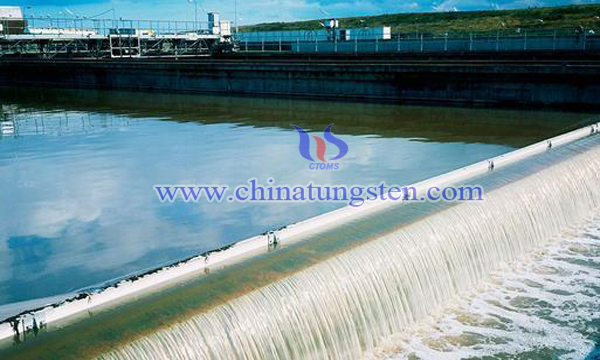Bismuth Tungstate / Boron Nitride Composite Photocatalyst (Part Two)
- Details
- Category: Tungsten Information
- Published on Friday, 01 June 2018 16:56
Bismuth tungstate is a layered structure, and bismuth tungstate has a photocatalytic performance under visible light. It can photolysis and photodegradation of organic pollutants in visible light. Therefore, bismuth tungstate has a good application prospect in many related fields.

Researchers have proposed a bismuth tungstate / boron composite photocatalyst, and its preparation process is as follows:
(1) The six square boron nitride powder, sodium nitrate and concentrated sulfuric acid were mixed in the ice water bath after mixing with the mass ratio of 1:0.5~1:30 ~60. The suspension was mixed and the potassium permanganate was slowly added to the suspension. The mass ratio of six square boron nitride and Potassium Permanganate was 1:0.5~1, and the continuous stirring should be 8 to 24h, and then hydrogen peroxide was added. The mass ratio of potassium permanganate and H2O2 was 0.5 ~ 16, and the mass ratio of potassium permanganate and H2O2 was 1:8 ~ 16. After the reaction, the suspension was centrifuged under the 3000rpm condition for 10min, and the upper suspension was filtered with micropore, and the deionized water was washed to neutral. The boron nitride nanoscale was obtained after drying.
(2) The bismuth nitrate of five water is dissolved in a nitric acid solution with a concentration of 10%. The mass ratio of bismuth nitrate and nitric acid in five water is 1:40~100, then a mixture solution of boron nitride nanoscale and sodium tungstate is added. The molar ratio of boron nitride nanoscale and five bismuth nitrate is 1:0.01~0.6, and the molar ratio of five bismuth nitrate and sodium tungstate is 2:1. The mixed solution was stirred evenly by ultrasonic and transferred to a hydrothermal reactor and was heated to 120~220°C in a oven for 5 ~ 30h and cooled to room temperature. The obtained products were centrifuged, washed and dried, and bismuth tungstate / boron nitride composite photocatalyst was obtained.
Boron nitride has a similar structure to graphite, but it has a lot of excellent physical and chemical properties compared with graphite. The surface of the layered boron nitride nanoscale will have a certain electronegativity due to the existence of nitrogen vacancy. If boron nitride nanoscale is used as a photocatalyst carrier, the semiconductor photocatalyst is loaded. On the boron nitride nanoscale, the electronegativity of the surface of the boron nitride nanoscale will attract the photogenerated cavitation of the semiconductor valence band to promote the migration of the hole, and thus improve the migration efficiency of the optical carrier. In addition, the specific surface of boron nitride nanoscale is beneficial to increasing the adsorption properties of the composite system. These are beneficial to the photocatalytic efficiency. Bismuth tungstate / boron nitride composite photocatalyst is an environmentally friendly material.
- Tungsten Oxide Manufacturer & Supplier, Chinatungsten Online: www.tungsten-oxide.com
- Tungsten News & Prices of China Tungsten Industry Association: www.ctia.com.cn
- Molybdenum News & Price: news.molybdenum.com.cn
- Tel.: 86 592 5129696; Fax: 86 592 5129797; Email: sales@chinatungsten.com



 sales@chinatungsten.com
sales@chinatungsten.com